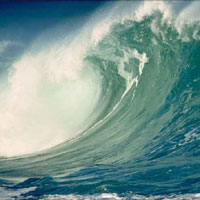QUEZON CITY — Tsunami alert levels in the country’s northeastern seaboard such as the Batanes Islands, Aurora and Isabela provinces have been lifted by disaster-preparedness authorities, though residents in coastal areas must look out for so-called “weird” waves.

On Saturday morning, more than 55,000 residents in the eastern seaboard were allowed to return to their homes as the tsunami threat subsided, according to Executive Director Benito Ramos of the government’s disaster-preparedness group.
Ramos said residents were allowed to return home after spending Friday night at temporary shelters inland, but advised them to avoid the water.
“The current trend of observed wave heights suggests that the threat of a hazardous tsunami has passed,” he told reporters at Camp Aguinaldo in Quezon City.
The tsunami alerts were implemented early Friday evening as a precaution against those that formed after an earthquake of 8.9 magnitude struck Japan Friday afternoon.
Countries in the Pacific Rim, including Japan, the United States, Russia, Indonesia, New Zealand and Chile were issued tsunami alerts.
Parts of Northern Luzon experienced the first tsunami waves, or so-called reflected waves, late Friday night but as Ramos happily joked on Saturday, “not even a duck will float on it.”
Tokyo’s powerful quake spawned big waves, killing hundreds of people in Japan, though there were no reports yet of any casualty among the more than 350,000 Filipinos there. About a third of that number reside in Tokyo and the worst-hit areas of Miyagi and Sendai provinces.



 ShareThis
ShareThis